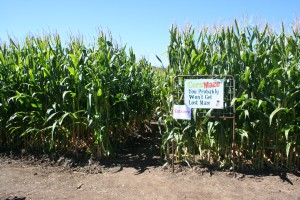 Access to adequate amounts of healthy food is one of the most important things that differentiate thriving regions from those that are faltering. Security to our food supply is therefore of the utmost importance to almost every nation in the world. Here in the U.S., food shortages, the inability to obtain the food necessary to sustain life, is a foreign concept. However, as one of the largest producers of food in the world, food security programs and policies to protect our food supply are as important here as they are in some less agriculturally blessed regions.
Access to adequate amounts of healthy food is one of the most important things that differentiate thriving regions from those that are faltering. Security to our food supply is therefore of the utmost importance to almost every nation in the world. Here in the U.S., food shortages, the inability to obtain the food necessary to sustain life, is a foreign concept. However, as one of the largest producers of food in the world, food security programs and policies to protect our food supply are as important here as they are in some less agriculturally blessed regions.
In order to ensure we have a continuous and abundant food supply, the agriculture industry knows that the systems and processes that produce that food must be sustainable. History shows us what happens when regions rely on unsustainable systems for their food supply. The great potato famine in Ireland, where complete reliance on a single crop led to large-scale famine, estimated to have killed over a million people. Desertification and poor land use practices like overgrazing cattle and land degradation in Africa and other locations resulted in a cycle of extreme famine and widespread starvation. It also shows us that it doesn’t take long to go from abundance to absence.
In order to continue producing expected crop yields and to find ways to grow more food to support the ever-increasing world population, we must continue to seek, support, mandate, and monitor factors impacting our agricultural sustainability. The Keystone Alliance for Sustainable Agriculture is one group that is working across the agriculture industry to identify opportunities for continuous improvement in areas that impact sustainability like productivity, environmental quality, and socioeconomic factors. This group recently released their 2012 national report that shows how we are doing in terms of sustainability. This year, the news is good!
The report shows that we are consistently producing six of our main commodity crops more efficiently than we were as little as 30 years ago. That may sound like a long time, but when you consider that we have been farming for a large portion of human history, it is easier to put 30 years into perspective. The crops, which include corn, wheat, soybeans, cotton, rice, and potatoes, are experiencing increased production while also making better use of available resources. This double win is due in large part to improvements in safety on farms across the agricultural spectrum and programs that provide economic stability to producers. These programs help farms withstand that constantly shifting profitability potential caused by weather, drought, and commodity trading.
In order to produce the report, the Keystone group looked at a range of factors. For each crop, resource use, or how much resource is required to produce one unit, is assessed across several environmental indicators including land use, irrigation water use, energy use, soil erosion, and green house gas emissions. This information is then used to identify trends, highlight where things are working well, and indicate where improvement is needed. By assessing these and other factors and indicators over time, industry experts can assess the effectiveness of current programs and help the industry as a whole prioritize standards, practices, and policies in order to continue making improvement in sustainability.
Related articles
- It’s National Farmers’ Market Week! Let’s Go Shopping! (fillyourplate.org)
- Peanut Shortfall Yields Peanut Abundance (fillyourplate.org)
- Happy Birthday USDA (fillyourplate.org)

